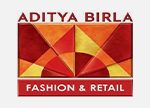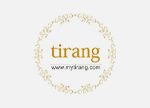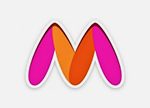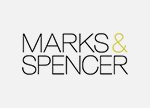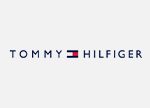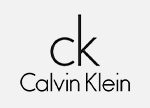The Course
BVA/B.Des. in Graphics and Communication Design
Visual storytelling begins here!
These undergraduate programmes are designed for participants looking to enter the design world, and provide a complete education allowing participants to acquire the necessary knowledge and skills to pursue a career in the chosen field.
BENGALURU
Duration
4 years (full-time)
Eligibility
10 + 2 | PUC | Higher Secondary Education with 40% (in any stream)
Certificate Type
Bachelor Degree
Degree Issuing Authority
Bengaluru City University
Programme Overview
BVA/B.Des. in Graphics and Communication Design employs an approach that inspires creativity and critical thinking about graphic design practice’s varied techniques and technical features. The programme encourages students to develop innovative methods. This course will assist students to become designers of the future and realize the role of design in a commercial setting by analysing the characteristics that have influenced its practice.
- PROGRAMME OBJECTIVE
- LEARNING OUTCOMES
- CURRICULUM
- EVALUATIONS
- ASSESSMENTS METHOD
- CAREER OPPORTUNITIES
- PLACEMENTS
- The objective of graphic design is to present students to a discipline that will provide them with the requisite tools to learn and grow their potential.
- The programme’s curriculum is curated to instill confidence in the students to express their creative ideas.
- The programme enables students to analyse and utilise the design from idea till final output in order to create effective communication solutions.
- Students are encouraged to learn about the evolving technological landscape.
- Employment of new media design while mastering the intended effect wished to achieve with a commercial, business, or service company.
- In addition, seminars, workshops, industrial visits etc. to experience first-hand industrial projects contribute to a well-rounded education for the students.
- The BVA/B.Des. in Graphic Design and Communication aims to develop:
- Professionals who have gained skills in the design discipline which help them to create effective advertisements, web pages, book covers, posters, instruction manuals, and more.
- Thoughtful application of theory through knowledge of concepts such as usage of space colours, colour theory, composition, typography etc.
- Students develop critical thinking skills during the initial stage of the projects by defining goals and expectations, creating inspiration boards, and taking the best features of each one to appreciate maximum effect.
- Effective communication is vital. While creating posters or ads, comics, illustrations, paintings or logos, characters or models, the most important thing is that the message is conveyed correctly by the audience.
- Understand the design philosophy, theories, data, analysis, and application.
Semester 1
- Language – I
- Language – II
- Open Elective
- Design language – I
- Design Fundamental – I
- Drawing Fundamental – I
- Skill Enhancement Course (EVS)
- PE – Yoga
- H&W
Semester 2
- Language – I
- Language – II
- Open Elective
- Design Language – II
- Design Fundamental – II
- Drawing Fundamental – II
- Skill Enhancement Course (Digital fluency)
- PE – Yoga
- H&W
Semester 3
- Language – I
- Language – II
- Open Elective
- Graphic Design & Communication – I
- Basic Typography – I
- Digital Media – I
- Skill Enhancement Course
- PE – Yoga
Semester 4
- Language – I
- Language – II
- Graphic Design & Communication – II
- Advance Typography
- Digital Media – II
- Skill Enhancement Course
- PE – Yoga
Semester 5
- Graphic Design for Print & Web Media
- Graphic Design for Print & Web Media
- Graphic Design for gaming
- Information Design
- Theory of Advertising Design
- DSE 1 – Camera and Film Editing
- VOC1 – Visual Merchandising
- SEC 4 – Skill Enhancement Course
Semester 6
- Advertising Design & Media
- Packaging Design and Printing Technology
- Introduction to UI/UX Design
- Theory Visual communication & Media
- Motion Graphics
- VOC1 – Retail Design
- SEC (2)/ Internship (2)
Semester 7 *
- Graduation Project – I
- Portfolio Development
- Design and Management
- Design Thesis
- Open Elective – III
Semester 8 *
- Graduation Project II
- Internship
- JD Design Awards
- Case Studies– Explore the application of knowledge gained to real-world industry scenarios.
- Industrial Visits– These trips acquaint students to the trends and requirements of the industry.
- Self-Study– It acts as a beneficial tool to aid in classroom learning to explore subjects independently.
- Classroom Lectures– Through lectures the students are provided with vital terms, facts and concepts.
- Seminars– Presented by industry experts it is a gateway to learn from experts and helps to develop a broad perspective.
- Studio / Workshop / Laboratory / Practical Sessions– Students gain insights into the technical areas that demonstrate diverse skill sets of the industry.
- Demonstrative– Applied for necessary practical subjects.
- Group Work– Is a dynamic and effective way to develop strong learning.
- Internal Assessments– Helps to determine a student’s knowledge progression during the entire course.
- Projects– In-class and independent research projects undertaken by students to establish their understanding of the subject.
- Examinations– The time bound method of assessment provides insights of the students’ understanding of the subjects.
- Presentations– Used for some subjects. It showcases students’ grasp of the topics, communication skills, professionalism, critical thinking and interpretations/ findings.
- Portfolio Assessment– Is a consolidation of ideas, concept, boards that traces the entire flow till the execution stage.
- Thesis Assessment– Independent research conducted to prove the possibility of an idea
- Graphic Designer
- Surface Pattern Designer
- Branding and Marketing Manager
- Packaging Designer
- Communication Designer
- Publication Designer
- Curator
- Multimedia Artist/Animator
- Web Designer
- UI/UX Design
- Photographer
- Cinematographer
FAQ
Q: What is BSc. in Graphic Design about?
A: This programme focuses on visual communication, typography, and digital design.
Q: What are the course timings?
A: The course typically spans 4-years of full-time study and the timings are from 9:30 am to 4:30 pm.
Q: What will I learn in this course?
A: You’ll develop skills in graphic software, layout design, branding, illustration, and interactive media.
Q: Are there placement opportunities?
A: Yes, the programme often provides internships and industry connections.
Q: How important are industry visits?
A: Industry visits offer insights into real-world design projects and trends.
Q: Why choose this course?
A: If you’re intrigued by visual storytelling and creative communication, this programme prepares you for a dynamic graphic design career.
Q: What are JD Design Awards?
A: JD Design Awards recognize and showcase student creativity, offering exposure within the design industry.
Q: Is the course beneficial?
A: Absolutely, it equips you with practical skills to craft impactful visuals and succeed in the graphic design field.
Q: What’s the infrastructure like?
A: The programme provides modern design labs and resources to enhance your learning experience.
Q: Can I join through lateral entry?
A: Lateral entry options might be available based on prior qualifications and experience.
Q: Does JD School of Design offer scholarships and fee concessions?
A: Yes, JD School of Design offers a variety of scholarships and fee concessions to help students access education. For more information click here .

